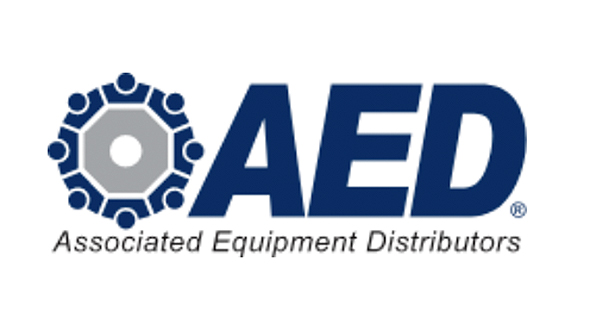White House outlines $2 trillion infrastructure plan

The Biden administration released details Wednesday of its proposed $2 trillion infrastructure. Photo: lucky-photographer/iStock / Getty Images Plus/Getty Images
The White House released the framework of President Biden’s infrastructure package Wednesday, with the president’s plan calling for an additional $621 billion in transportation infrastructure.
The Associated Equipment Distributors (AED) provided a financial breakdown of the $2 trillion package:
• $621 billion for transportation, including roads, bridges, transit, ports and airports, as well as electrifying vehicles
• $400 billion for “expanding access to quality, affordable home- or community-based care for aging relatives and people with disabilities”
• $300 billion to invest in U.S. manufacturing and to strengthen critical supply chains
• $213 billion to “produce, preserve and retrofit affordable and sustainable places to live.”
• $137 billion for physical upgrades to public schools, community colleges, child-care facilities, VA hospitals and federal buildings
• $111 billion to upgrade drinking and wastewater infrastructure
• $100 billion for high-speed broadband infrastructure
• $100 billion to upgrade the U.S. power infrastructure
• $100 billion for workforce development and jobs training programs
“AED commends President Biden for proposing a bold plan to rebuild the nation’s physical infrastructure, including investments in roads, bridges, highways, broadband, ports, water systems and other projects,” says Brian McGuire, AED president and CEO. “America’s critical infrastructure is deficient and deteriorating after many years of underfunding. The time is long overdue for the federal government to provide the investments needed to restore the nation’s infrastructure to the envy of the world. There is no better way to put the United States on the path to long-term economic growth and job creation than investments in transportation, water, telecommunications and energy infrastructure.”
According to AED, the Biden administration proposes to pay for the American Jobs Plan through a variety of tax changes targeted to corporations, including increasing the corporate rate to 28 percent, creating a 15 percent minimum tax on the income corporations use to report their profits to investors, eliminating tax preferences for the fossil fuel industry, greater tax liability on U.S. multinational corporations, and more robust IRS tax enforcement.
“We support President Biden’s vision for how to build a new and stronger economy that creates opportunity for all Americans,” says Kip Eideberg, senior vice president of government and industry relations at the Association of Equipment Manufacturers. “Equipment manufacturers are investing in their communities and creating new family-sustaining jobs, encouraged by signs that we may finally be getting COVID-19 under control. We stand ready to work with President Biden to help him make the bold, transformational investment in workforce development, infrastructure and American manufacturing that is long overdue.
“At the same time, we strongly urge him to make sure that we preserve the predictability and stability in the tax code that keeps equipment manufacturers competitive and drives job creation and good wages,” Eideberg adds. “Tax reform made equipment manufacturers more competitive in the global economy. It is imperative that we do not undo that progress.”
Stephen Sandherr, CEO of the Associated General Contractors of America (AGC), reacted to the White House’s proposal similarly.
“We greet the president’s new infrastructure proposal with mixed emotions,” Sandherr says. “On one hand, the president is right to focus on rebuilding a broad range of aging and overburdened infrastructure and modernizing buildings. These investments will create a significant number of new construction career opportunities that traditionally pay well above jobs in other industries.
“Unfortunately, the president seeks to saddle these new investments with a host of labor and regulatory measures that will hurt workers and offset many of the economic benefits of these new infrastructure investments,” Sandherr adds.
According to Sandherr, by seeking to couple his new infrastructure proposal with the PRO Act, President Biden is signaling that infrastructure investments must come at the expense of labor harmony and economic certainty.
“The PRO Act will give organized labor unprecedented abilities to disrupt all manner of economic activities, at any time, to meet their broader objectives,” Sandherr says. “His justification for seeking to impose the labor measures in this proposal, that construction workers have been traditionally underpaid, is clearly wrong as even a cursory check of data tracked by the Bureau of Labor Statistics would have confirmed.”
The idea of financing infrastructure investments primarily through an increase in the corporate tax rate does not sit well with AGC, either.
“That is because these new tax hikes will limit the ability of many employers to invest in capital improvement that will provide additional career opportunities for construction workers,” Sandherr says. “The tax hikes will also undermine firms’ ability to investment in new equipment and technology and will limit America’s global competitiveness.”
Still, AGC is encouraged by the president’s proposal because it serves as a reminder that investments in infrastructure are needed.
“Our expectation is this proposal will prompt an important debate about the best way to make, and fund, those investments in a way that fully supports economic growth,” Sandherr says. “We look forward to working with members of Congress in both parties to craft a bipartisan infrastructure proposal that will do as much to boost economic growth as it does to improve civil works and make our structures more efficient.”












